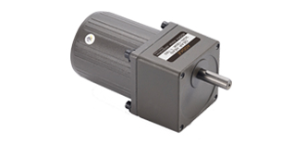Multifunctional Applications of Micro Gear Motors
Micro gear motors are compact, low-capacity motors typically with output power under a few hundred watts. These motors are used in applications with special performance and environmental requirements, where traditional motors might not be suitable. The full name of micro gear motors is “micro-specialty motors,” with the term “micro motor” commonly used as a shorthand. These motors are often used in control systems to detect, process, amplify, execute, or convert electro-mechanical signals or energy. They can also be used to drive mechanical loads or serve as power supplies for equipment, whether AC or DC.
Types of Micro Gear Motors
Micro gear motors can generally be classified into three categories based on their structure:
- Electromagnetic Type: The basic components are similar to those of conventional motors, including stator, rotor, armature windings, and brushes, but the structure is more compact.
- Combination Type: These motors combine different technologies, such as a DC motor paired with a sensor, or a combination of X and Y-direction linear motors.
- Non-electromagnetic Type: These motors have a similar outer shape to the electromagnetic type, such as cylindrical forms for rotary products and rectangular shapes for linear products. However, the internal structure varies significantly due to differences in their working principles.
Major Categories of Micro Gear Motors
Micro gear motors come in a wide range of types, broadly classified into 13 categories:
- DC motors
- AC motors
- Synchronous motors
- Stepper motors
- Rotary transformers
- Shaft encoders
- AC/DC hybrid motors
- Tachogenerators
- Induction synchronizers
- Linear motors
- Piezoelectric motors
- Motor assemblies
- Other specialty motors
Applications of Micro Gear Motors
Micro gear motors are primarily used in three major fields:
- Power Source for Mechanical Loads: They are commonly used to drive machinery in applications without special control requirements.
- Audio and Video Equipment: In devices such as cassette tape recorders, micro motors serve as key components for the magnetic drum assembly. They drive the main shaft, control the tape tension, and manage automatic loading/unloading of the tape cassette.
- Office Automation and Industrial Equipment: Micro motors are widely used in office automation equipment, computer peripherals, and industrial automation systems. Examples include disk drives, copiers, CNC machines, and robots.
Performance Differences Across Types of Micro Gear Motors
There is a wide range of performance differences among various types of micro gear motors, and it can be challenging to generalize their performance parameters. Typically, motors used for driving mechanical loads emphasize force and energy characteristics during operation and startup. Motors used as power supplies focus on output power, waveform, and stability, while control-specific micro motors emphasize both static and dynamic characteristics.
Key Performance Parameters:
- Operating Characteristics: The relationship between output and input quantities, or between two output quantities, is used to describe the motor’s operating characteristics. For control applications, the static characteristic curve should be continuous and smooth, without any abrupt changes. The dynamic characteristics are usually represented by frequency curves or response curves. The frequency curve should be stable, without oscillation points, and the response curve should converge quickly.
- Sensitivity: This refers to the output quantity per unit of input signal, often represented by parameters like torque constant, electromotive force, and amplification factor.
- Accuracy: Accuracy is defined as the difference between the actual output signal and the theoretical value under specific input conditions. This is commonly represented by error magnitude.
- Impedance or Resistance: In a system, the input and output impedance of a micro motor should match the corresponding circuit to ensure optimal system performance and precision.
- Reliability: While reliability is a critical requirement for control micro motors, it is also essential for driving and power supply micro motors. Despite size limitations, micro motors still maintain essential reliability features, such as a long service life.
Micro gear motors, despite their small size, have a wide range of multifunctional applications across different industries, including control systems, audio-visual equipment, and industrial automation. Their design and performance parameters vary depending on their intended use, with motors for mechanical drive applications prioritizing power, while control motors focus on precision and dynamic characteristics. Understanding these diverse characteristics is key to selecting the right type of micro gear motor for each application.

